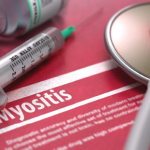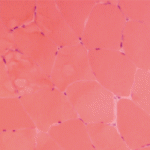 ATLANTA—Despite their toxicity risk, glucocorticoids are a mainstay of treatment for myositis and usually lower a patient’s creatinine kinase level. However, this approach doesn’t mean a patient is actually being treated properly, cautioned an expert during a session at the 2019 ACR/ARP Annual Meeting in November.
ATLANTA—Despite their toxicity risk, glucocorticoids are a mainstay of treatment for myositis and usually lower a patient’s creatinine kinase level. However, this approach doesn’t mean a patient is actually being treated properly, cautioned an expert during a session at the 2019 ACR/ARP Annual Meeting in November.
The discussion touched on myositis management, the importance of exercise and novel therapies being developed.
Treatment Options
“Treatment, not surprisingly, is based on eminence-based medicine—almost exclusively on expert opinion,” said Lisa Christopher-Stine, MD, MPH, director of the Johns Hopkins Myositis Center, Baltimore. “The data we do have are derived from a few randomized clinical trials and small case series and open-label trials.”
Even steroids, which are a principal medication part of the algorithm in most treatment plans, have not been thoroughly studied in myositis, said Dr. Christopher-Stine. The standard dose of 1–2 mg per kg per day up to 80–100 mg per day has “never been trialed independently,” she said. It’s borrowed from other rheumatic diseases.
“No one knows exactly how to taper [steroids],” said Dr. Christopher-Stine. But she then suggested maintaining highdose, oral glucocorticoids for two to four weeks then gradually tapering to a minimally effective dose of 5–7.5 mg a day. In adults, she recommends concomitant glucocorticoid therapy-sparing immunosuppressive therapy within the first two weeks of glucocorticoid treatment.1
For first-line treatments with steroids, methotrexate and azathioprine are mainstays, while mycophenolate, tacrolimus and cyclosporine are used as second-line treatments. These second-line treatments should be limited due to their risk of toxicity. Rituximab is the preferred thirdline treatment, Dr. Christopher-Stine noted. And intravenous (IV) immunoglobulin can be used as a second- or third-line treatment.
Tips for Patient Care
Dr. Christopher-Stine offered additional tips and observations:
Treat the patient, not their creatinine kinase elevation: “Frequently, as physicians and type A personalities, I think we want to normalize everything; sometimes you can’t,” Dr. Christopher-Stine said. If a patient has experienced big improvements in muscle strength, if the creatinine kinase level is below 1,000, even if it may still be abnormal, “don’t feel the need to continue to suppress and suppress just to normalize that muscle enzyme.”
Not all dermatomyositis patients with a normal creatinine kinase are amyopathic: On Christmas Eve a few years ago, Dr. Christopher-Stine had a patient who was on relatively low-dose steroids and very weak, with a normal to low creatinine kinase level. On MRI, “every single muscle group in his thighs lit up with edema,” she said. It was her first indication, she said, that necrosis in the muscle, in addition to inflammation, can cause the creatinine kinase level to rise.



